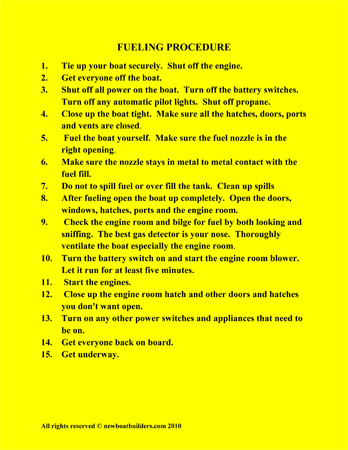- Sep 25, 2016
- 1,252
- Boat Info
- 300 Sundancer 1994, trailered tri-axle LoadRite roller
- Engines
- Mercruiser 5.7 260HP Alpha One Gen II, twin
S.O.P for me:
Raise hatch/smell test
Blowers on for a full 4 to 5 minutes.
Start genset.
Start Engines.
Lower Hatch.
Blowers stay on until we return to the dock and are the last things off.
The fumes from 1/4 cup of gasoline are equal to 15 sticks of dynamite...
This is my routine EVERY time I leave the dock and EVERY time after I refuel.
Leave them running till back at the dock or anchored.
If I shutdown the engines, I'll leave the blowers running for a few minutes for cool down.
@Waterlife,
Intake should be high in compartment, cool air in.
Exhaust hoses as low as possible fumes out, (gas is heavier than air)



